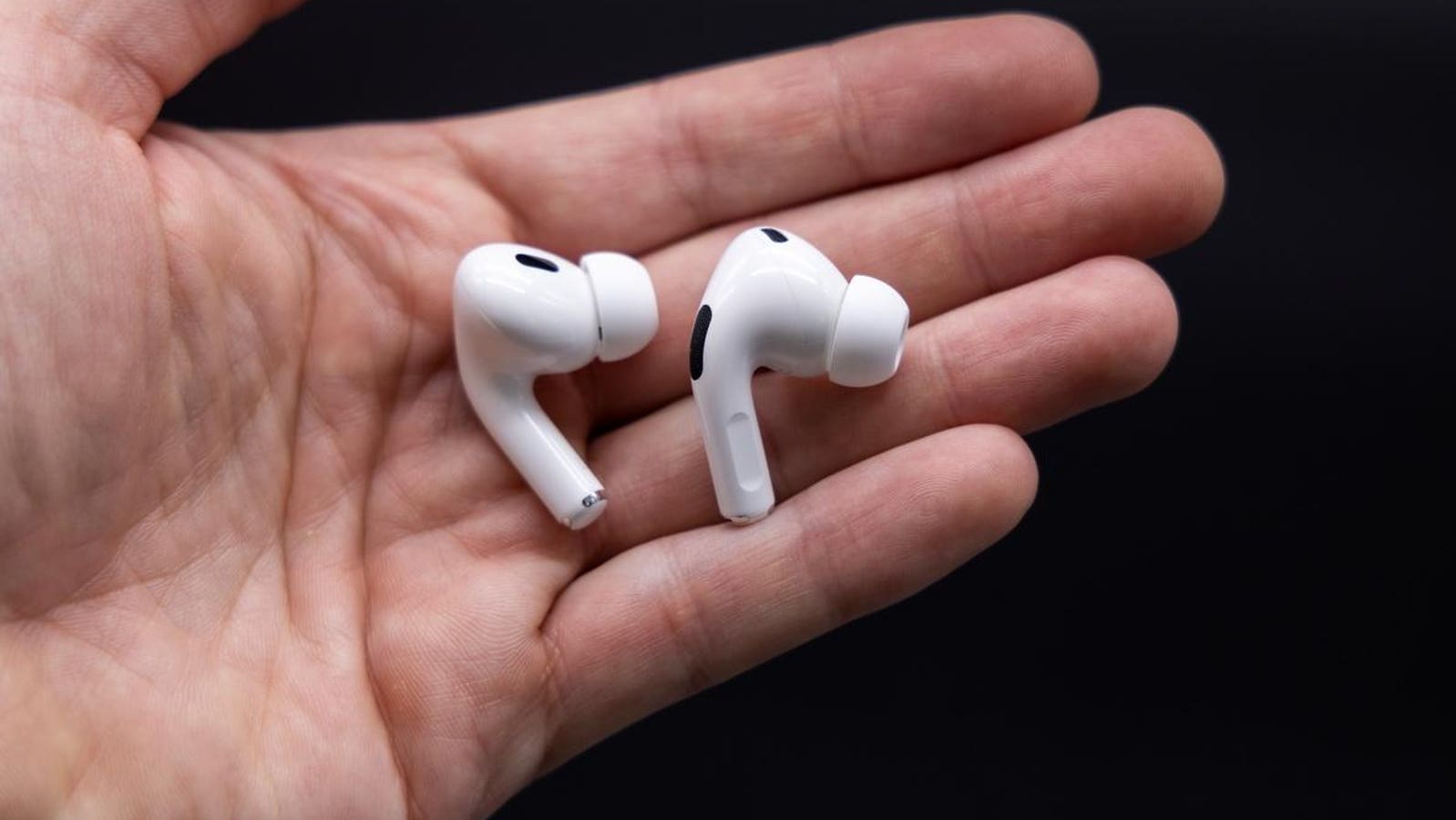Apple Airpods 2 now has a new hearing aid feature that allows them to perform a hearing test and … [+]
In September, the US Food and Drug Administration (FDA) approved a “hearing aid feature” for Apple’s AirPods Pro 2 — the version that fits snugly in your ears with rubber tips. The ear buds now offer a hearing test and the ability to amplify ambient sound in case of mild to moderate hearing loss. The feature requires a free software update on iOS 18-compatible iPhones and iPads.
30 million Americans have hearing loss, according to the Centers for Disease Control and Prevention. Many go undiagnosed and never wear hearing aids. For some, hearing aids are essential to daily life, especially for those with disabling hearing loss. Traditionally, getting an official diagnosis of hearing loss and getting conventional hearing aids involves going to an audiologist, who performs a hearing test called an audiogram, prescribes custom-programmed hearing aids, and then works to ensure that they are optimized.
Enter tech companies, which over the past few years have steadily improved the functionality of ear buds for listening to music, talking on the phone, and watching Netflix. The same hearing technology helps amplify sound for the hearing impaired.
Are Apple’s AirPods Pro 2 good headphones?
In 2018, Apple released the Live Listen feature, which uses the iPhone’s microphone to amplify sounds directly into the AirPods. In 2021, “Conversation Boost” was added which uses beamforming microphones and computational audio to focus on the sound in front of the user.
This begs the question: can Apple’s AirPods—a well-known and popular device—be a viable and affordable alternative to conventional hearing aids?
The answer is complicated. AirPods deliver and amplify sound, and in studies they perform remarkably well compared to hearing aids, especially for a multi-functional device. However, in many cases, they are not as good as professionally programmed specialized equipment.
This makes them an adequate option for mild to moderate hearing loss, but not a good choice for severe or disabling hearing loss or more complicated hearing problems. Conversation Boost improves speech clarity when there is background noise, but does not match the adaptive processing capabilities of conventional hearing aids, especially in challenging listening environments.
Pros and cons of AirPods 2 as hearing aids
One advantage of AirPods is their cost with a retail price of $250, which recently dropped to $170. This is a fraction of conventional hearing aids that can set you back $1,000 to $6,000 per pair. Hearing aids are sometimes not covered by insurance plans. Coverage may also depend on the degree of hearing loss. Therefore, AirPods can be a cost-effective alternative for people with mild to moderate hearing loss where insurance won’t cover conventional hearing aids.
AirPods are also accessible to anyone who can afford them. They require no interaction with the medical system: no appointments, no prescriptions, and no waiting for hearing aid programming.
Another important feature in AirPods is the built-in hearing test. Positive test results may prompt people to seek medical advice. In some cases, hearing loss can be caused by more serious issues, such as an acoustic neuroma – a non-cancerous brain tumor which, if left undiagnosed, can grow and affect other parts of the brain. Hearing loss can also be from the accumulation of earwax, which can simply be removed.
The appearance of conventional hearing aids also comes with a stigma for some users. Using AirPods can help overcome some of this. However, AirPods can also create an awkward social situation if people think that wearing them means that a person is not listening, perhaps on a phone call or listening to music.
People usually use hearing aids throughout the day. Battery life and convenience are the main issues. Conventional hearing aids have long battery lives, lasting several days per charge, or use disposable batteries. AirPods last about 6 hours before needing a recharge. When it comes to comfort, the rubber tips of the AirPods can irritate the ears, especially if used for long periods.
Another problem with AirPods: prolonged listening at high volume can cause hearing loss. Now with AirPod’s hearing aid feature, it may be the only consumer electronics on the market that can both cause and solve a health problem.
A major reason AirPods can now be marketed as hearing aids is that in 2022, the FDA created a new category of over-the-counter hearing aids. Other options in this category are made by Jabra, Audien and Eargo and others, each with different options—including auditory consultation in some—with variable prices ranging from $200 to $2,000 per pair.
Do AirPods as Hearing Aids Signal a New Consumer Electronics Trend?
Ultimately, AirPods and other over-the-counter hearing aids cannot completely replace all the features of conventional hearing aids, especially for people with complex hearing problems or severe hearing loss. However, they signal a future where tech companies will continue to blur the lines between consumer electronics and medical care when it comes to diagnosis and treatment.
The Apple Watch (Series 4 or later or Ultra model) – for example – has an electrocardiogram feature to detect atrial fibrillation – an arrhythmia of the heart. Oura ring can monitor heart rate, blood oxygen level, temperature, activity and sleep. As consumer technology like AirPods and others advances and powerful new artificial intelligence algorithms are integrated, there will be increasing ways to monitor, diagnose and treat health conditions.
